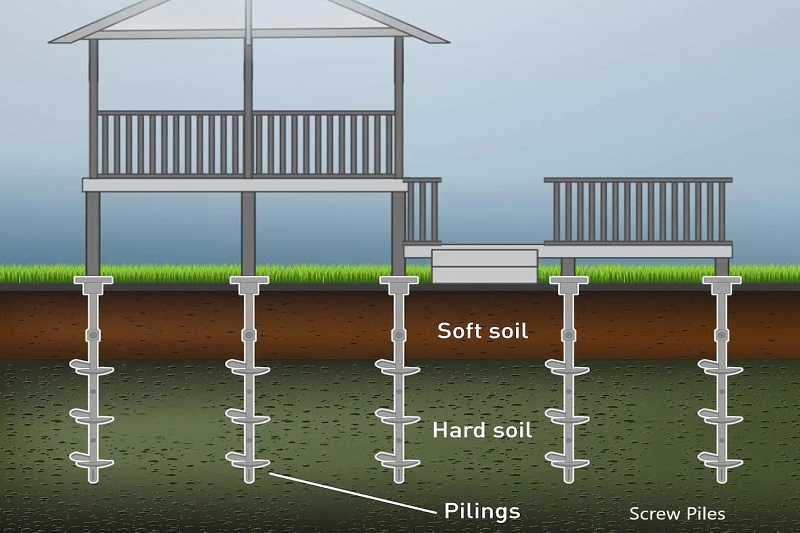Screw piers are an excellent substitute for conventional stumps. The piers are made of long steel tubes with a screw head at one end that is place into the earth. The opposite end, which extends out, is fit with a circular platform on which the house structure is support. It is also known as screw piles.
They are typically made of high tensile steel. Not only must they be extremely strong to support the home, but they must also be extremely strong to avoid buckling or twisting during installation.
How Is Screw Piers Use?
Screw piers are insert into natural material by measuring the installation torque to determine the end bearing capacity. The tools and motors use to install the piers are calibrate to guarantee precise tolerances are met. Usually, the pier system allows the installation crew to build extensions to the install piers if the capacities are not met.
They may be utilize almost everywhere an excavator can fit, due to:
- A wide range of soil types they can be employe in.
- Ease of installation
- Speed of installation, and
- Resulting stability
They are very popular with prefab steel frame buildings because of their simplicity of construction and because they involve little clean-up once the installation is complete. The basic design of screw piers is similar across the construction industry. However, there are differences in the designs of the piers from one manufacturer to the other. They are often deploye in a similar manner and serve the same fundamental purpose.
How is Installation of Screw Piers Done?
The process of installation is extremely quick, with most standard-size tasks taking only four or five hours to complete. The site is initially identify with the location of each post. A hydraulic drive motor attach to an excavator is then use to drill the pier into the earth. The screw head on the pier is a displacement screw, and it disturbs very little soil, much like a wood screw in a board. The surrounding dirt is, instead of being excavate, press against the pier, keeping it sturdy. It should be note that though the screw head cannot be use on bedrock, it is good for almost every other soil type.
Once inside, the piers are measure using a laser to ensure that they are level, then cut to size, and finally the process is complete by placing a little circular platform on top of the pier. The frame may then be place on top, where it can be attach to the piers. Also, a slab can put over the ground at the foot of the piers for additional stability and moisture protection. Most installations are done in four or five hours, and they are ready for use right away.
Where Is Screw Pier Use?
Screw piers are use for many purposes:
- They are use in supporting the weight of a structure while providing stability and preventing movement.
- These piers are commonly use in construction projects and can be seen at work sites across the country.
- When building a home, these piers are often place under the foundation of the house to provide additional support and prevent movement.
- In addition to being use for structural support, screw piers are also use for decorative purposes.
During the installation procedure, each pier capacity obtain is recorde in the installation records. When the capacity is reach, the pier top is remove, and the garbage is haul from the site thus making installation easy and quick
Screw piers are quick and easy to install since they do not require pre-dug holes or concreting in, allowing you to set up the frame as soon as each pier is capped. They save time and money on installation and can be conveniently adjust even after installation.
